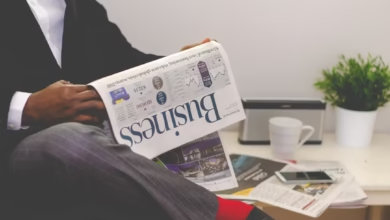Fiscal Policy and Inflation: Unraveling Government Spending, Taxes, and Their Impact on Economic Growth and Inflation Strategies

In today's dynamic economic landscape, understanding the intricate relationship between fiscal policy and inflation is more critical than ever. As governments navigate the challenges of rising costs of living, wage inflation, and supply chain disruptions, their spending and taxation decisions play a pivotal role in shaping inflation trends. This article delves into the various dimensions of fiscal policy, exploring how government actions can trigger different types of inflation, from hyperinflation to stagflation.
We will examine the underlying causes of inflation, including the impact of energy prices, food prices, and currency devaluation, while also considering how central banks respond through monetary policy measures such as interest rate adjustments. Additionally, we'll provide insights into inflation strategies that can help individuals safeguard their retirement savings and investments against the unpredictable nature of inflation metrics like the Consumer Price Index (CPI) and Producer Price Index (PPI).
Join us as we unpack these complex topics and equip you with the knowledge needed to navigate today's inflationary environment and its implications for economic growth.
- 1. Understanding Fiscal Policy: Its Role in Inflation and Economic Growth
- 2. The Causes of Inflation: Government Spending, Taxes, and Supply Chain Disruptions
- 3. Inflation Strategies: How to Hedge Against Inflation in a Changing Economy
1. Understanding Fiscal Policy: Its Role in Inflation and Economic Growth
Fiscal policy plays a crucial role in shaping the economic landscape, particularly in its interaction with inflation and economic growth. Understanding how government spending and taxation influence inflation is essential for policymakers and citizens alike.
Fiscal policy refers to the use of government spending and taxation to influence a nation's economy. When government spending increases, it can stimulate economic activity, leading to higher demand for goods and services. This heightened demand can contribute to inflation, especially if the economy is already operating near its capacity. Conversely, reduced government spending may lower inflationary pressures but could also slow economic growth if it leads to decreased consumer spending and investment.
One of the primary causes of inflation is the imbalance between supply and demand. For instance, if fiscal policy leads to increased government spending during a period of economic expansion, it may exacerbate inflationary trends, particularly wage inflation, where rising salaries push up the cost of goods and services. In contrast, during times of economic downturn, such as stagflation—a combination of stagnant economic growth and inflation—fiscal policy can be used to stimulate the economy through targeted spending.
Another aspect of fiscal policy to consider is its interaction with monetary policy. While central banks manage interest rates to control inflation, fiscal policy can either complement or hinder these efforts. For example, expansive fiscal policy, characterized by increased government spending or tax cuts, can lead to higher inflation expectations, which may compel central banks to raise interest rates to stabilize prices.
In recent years, global inflation trends have been influenced by various factors, including supply chain disruptions, energy prices, and food prices. As governments respond with fiscal measures, they must carefully balance the need to support economic growth while managing the risk of hyperinflation or currency devaluation.
Monitoring inflation metrics like the Consumer Price Index (CPI) and Producer Price Index (PPI) provides valuable insights into the effects of fiscal policy on inflation. These metrics help gauge the impact of government interventions and inform future fiscal strategies.
Ultimately, understanding the complex relationship between fiscal policy and inflation is vital for individuals planning for long-term financial goals, such as retirement savings or investment in inflation-proof assets like real estate or digital currencies. With evolving inflation strategies and trends, staying informed and adaptable is essential for navigating the challenges of inflation and securing financial stability.
2. The Causes of Inflation: Government Spending, Taxes, and Supply Chain Disruptions
Inflation is a complex economic phenomenon influenced by various factors, including government spending, taxes, and supply chain disruptions. Understanding the causes of inflation is essential for policymakers and investors alike, as it helps them navigate the intricate landscape of economic growth and stability.
Government spending plays a significant role in shaping inflationary trends. When a government increases its expenditure, especially during times of economic downturn, it can lead to higher demand for goods and services. This increased demand can push prices up, contributing to wage inflation and higher costs of living. For instance, during periods of hyperinflation, excessive government spending can devalue currency and erode purchasing power. Conversely, prudent fiscal policy that includes tax adjustments can help manage inflation by either stimulating growth or cooling off an overheated economy.
Taxes also influence inflation. Higher taxes can reduce consumers' disposable income, leading to decreased demand and potentially lower inflation rates. On the other hand, tax cuts can stimulate spending, leading to increased demand and upward pressure on prices. This dynamic is particularly evident in stagflation scenarios, where inflation is coupled with stagnant economic growth and high unemployment.
Supply chain disruptions have emerged as a prominent cause of inflation in recent years, exacerbated by global events such as the COVID-19 pandemic. These disruptions can lead to shortages of goods, resulting in increased energy prices and food prices as demand outstrips supply. As central banks monitor inflation metrics like the Consumer Price Index (CPI) and Producer Price Index (PPI), they often adjust interest rates to combat rising inflation expectations influenced by these disruptions.
Additionally, global inflation trends are interconnected with currency devaluation and international market fluctuations. As countries experience inflation, their currencies may weaken, leading to higher costs for imports and further driving inflationary pressures domestically.
In summary, the causes of inflation are multifaceted, with government spending and taxes playing crucial roles alongside supply chain dynamics. Understanding these factors is vital for developing effective inflation strategies, whether for individual investments or broader economic policies. Inflation-proof investments, such as real estate and digital currencies, can serve as effective hedging measures for those looking to protect their retirement savings against inflationary pressures.
3. Inflation Strategies: How to Hedge Against Inflation in a Changing Economy
In an era characterized by fluctuating economic conditions, understanding inflation strategies becomes essential for individuals and businesses alike. Inflation, defined as the rate at which the general level of prices for goods and services rises, can significantly impact the cost of living, wage inflation, and overall economic growth. As such, navigating through various types of inflation—be it hyperinflation, stagflation, or disinflation—requires a proactive approach to hedge against its effects.
One effective inflation strategy involves investing in inflation-proof investments. These assets typically maintain or increase their value during inflationary periods. Real estate has historically been considered a strong hedge against inflation, as property values often rise alongside inflation metrics such as the Consumer Price Index (CPI) and Producer Price Index (PPI). Additionally, tangible assets like commodities and precious metals can serve as a safeguard against currency devaluation and rising energy and food prices.
Another crucial aspect of inflation hedging is diversifying investment portfolios. Incorporating digital currencies, which may offer protection against traditional inflation risks, can be advantageous. While still relatively new, these assets can respond differently to inflation trends compared to conventional investments. Furthermore, incorporating inflation-linked bonds into your retirement savings can be an effective way to preserve purchasing power, as they adjust interest payments based on inflation expectations.
Fiscal policy plays a significant role in influencing inflation. Government spending and taxation policies can either alleviate or exacerbate inflation pressures. For instance, increased government spending may lead to greater demand for goods and services, potentially driving up prices. Conversely, higher taxes can reduce disposable income and curtail spending, affecting inflation dynamics.
Monitoring global inflation trends and understanding the underlying causes of inflation—such as supply chain disruptions and fluctuating energy prices—can also inform better financial decisions. Keeping an eye on central banks' monetary policy and interest rates is vital, as these factors directly influence inflation expectations and can affect investment strategies.
In conclusion, developing effective inflation strategies involves a multifaceted approach that considers various economic indicators and personal financial goals. By diversifying investments, leveraging inflation-proof assets, and staying informed about fiscal policies and global inflation trends, individuals can better navigate the complexities of an ever-changing economy and mitigate the damaging effects of inflation.
In conclusion, understanding the intricate relationship between fiscal policy and inflation is crucial for navigating today's economic landscape. As we have explored, government spending and tax policies significantly impact the causes of inflation, influencing everything from consumer prices to wage inflation. The types of inflation, such as stagflation and hyperinflation, highlight the varying challenges economies face and underscore the importance of effective fiscal policy in fostering economic growth.
Moreover, with rising energy and food prices, coupled with persistent supply chain disruptions, inflation expectations remain a key concern for households and investors alike. Strategic inflation hedging through inflation-proof investments, such as real estate and digital currencies, can help protect retirement savings against the cost of living increases driven by inflation metrics like CPI and PPI.
As we monitor global inflation trends and the responses of central banks through monetary policy adjustments, it becomes essential for individuals and businesses to stay informed about inflation strategies that can mitigate risks. By understanding these dynamics, we can better prepare for potential currency devaluation and the implications it has on inflation and debt. Ultimately, a proactive approach to fiscal policy and inflation management will be vital for achieving sustained economic stability and growth in the years to come.





